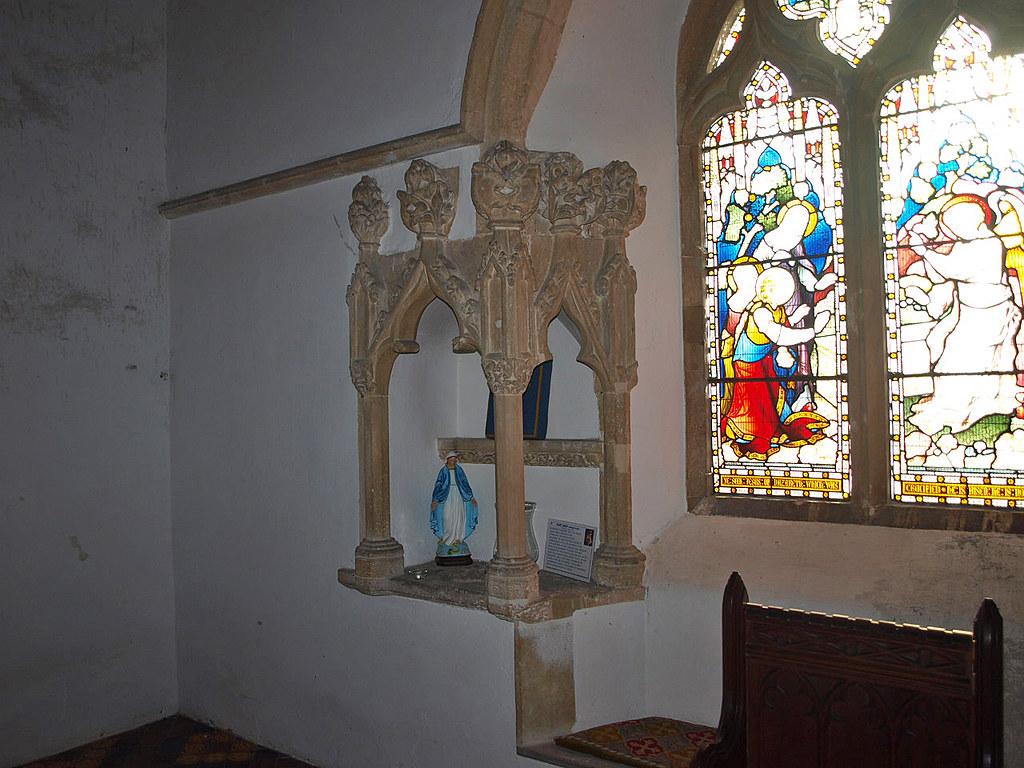ST MARY. (Norman N doorway into the vestry. With primitive volute capitals and a roll moulding.) Nave and chancel Dec, as is visible in the fine four-light reticulated E window, the PISCINA in the angle of the SE window which is elaborately crocketed and finialled, and the nave S lancet and S doorway Perp nave N windows and W tower. - PLATE. Paten 1710.
WEST STOW. Its glory is a piece of the England into which Shakespeare was born, a lovely example of the houses they built in the 16th century. But here on the heath is a habitation far older, an earthwork 340 feet round from which all manner of treasures have been taken to the museum at Bury - flints older than history, fragments of Celtic pottery and Roman kilns, a Saxon coffin and brightly coloured beads, many bronze ornaments, and lovely fibulas, some with faces.
So long is the story of this place, carried by these discoveries up to the time of the Saxons. After them came Norman masons fashioning the north doorway of the church, and then English builders, 700 years ago, fashioning the chief part of the building as we see it. The lovely canopied piscina was made in the next century, and in the next after that the tower was built and new windows added.
In its fine roof the chancel has carvings of saints and evangelists resting on stone angels and pelicans. There is an old aumbry by the altar, and a plain font with a rich oak cover. The attractive east window shows four scenes from the life of Our Lord, and in a big lancet window we see the Madonna.
It was when the Celts and Romans and Saxons and Normans had vanished into time, and the church very much as we see it today, that the hall was built, in our golden age of domestic architecture. Much of its old grandeur has gone, but we can still see the stately brick gatehouse joining on to the main building by a corridor. Among the trees it stands, with its lofty parapet, its cupolas and gables, and its many-sided towers, which seem to guard the simple doorway under a facade of lattice work. The gatehouse was added to the hall by Sir John Crofts, Master of the Horse to a lady whose shield is over the doorway and whose name was Mary Tudor, sister of Henry the Eighth, who married first a French king and then an English duke, and became the grandmother of Lady Jane Grey. We may read her story at Bury St Edmunds.
Imposing from outside, this gatehouse also has its interest within, for fading away on the walls are some rough paintings of Elizabeth’s day, lost for many years. One is a hunting scene with a man carrying a hare nearly six feet long, but more intriguing still are figures supposed to be some of the Seven Ages of Man in Shakespeare, each with a comment from our old friend the Cynic.



No comments:
Post a Comment